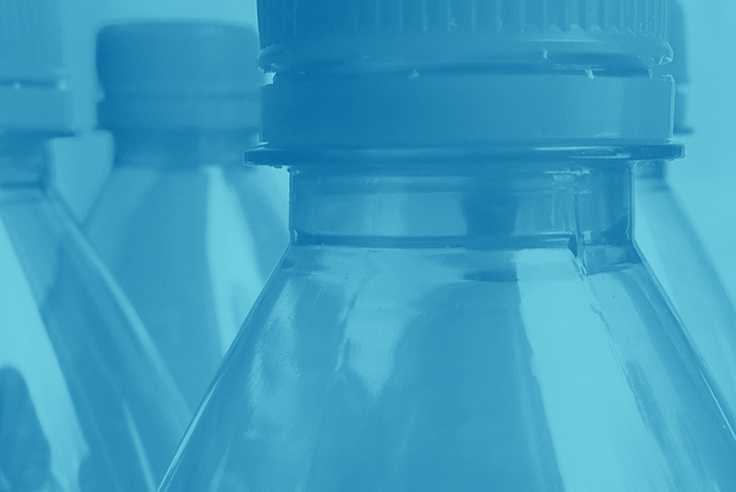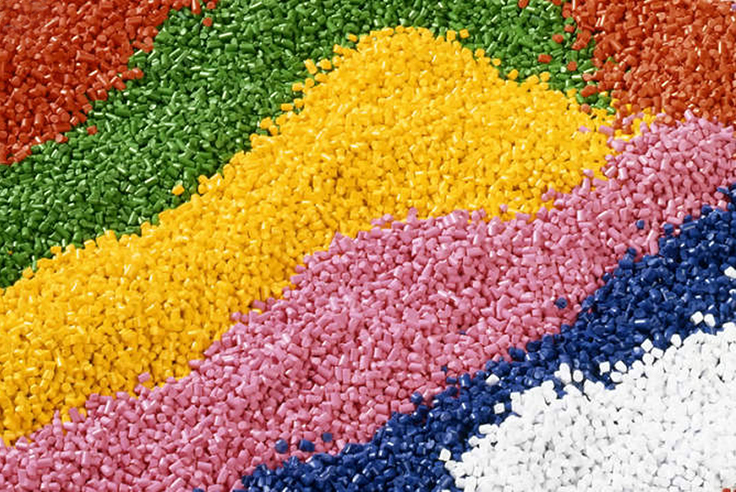Cleaning the rPET Stream
A study, commissioned by Closed Loop Infrastructure Fund, to identify recycling system interventions that reduce the cost of processing post-consumer PET.
Less than 30% of the PET used in bottles and jars is recovered in the US, and just 6% is re-used as rPET in new bottles. Yet PET is the most common resin type used in plastic packaging and the most universally accepted plastic in US municipal recycling programs. Recycling infrastructure for post-consumer PET is also the most mature. How can we address the stark under-performance of PET recycling through investment in solutions that provide long-term benefits to the system overall?
Ideally, demand pull from end users would encourage the recovery and reprocessing of post-consumer recycled PET; yet the market is constrained by the ability of suppliers to offer rPET at prices that can compete with virgin PET resin. If we are ever going to be able to grow the rPET market, we need better solutions that drive efficiencies throughout the process, improve the cost structure of producing rPET, and enhance the material’s overall value.
Statistics
More than 6 billion pounds of PET bottles and containers are generated each year
Less than 30% of the PET used in bottles and jars is recovered in the US
6% is re-used as rPET in new bottle
Our Work
In an analysis conducted by Closed Loop Partners with RRS, we have identified a suite of interventions that would greatly improve the cost structure of rPET and benefit MRFs, reprocessors, and end-users.
If implemented nationally, we could increase the recycling rate of PET by 6% and close the loop on nearly 80 million pounds of PET bottles each year – without putting a single new cart on the street.
Focusing on bottle-to-bottle processes, we identified several interventions that effectively improve yield from residential curbside collection by more than 20% and lower costs of rPET processing by 10%.By targeting action and investment, MRFs, reclaimers, reprocessors, and end-users could realize value for themselves and across the system.
THE COST DIFFERENCE BETWEEN RPET VS. VIRGIN PRODUCTION PROCESSES:
- Virgin: Virgin material is produced at scale by combining raw material inputs (PTA, MEG) in a polymerization process. At the time of the study, the estimated average cost to produce virgin PET was $0.60-0.65 per pound.
- RPET: Post-consumer recycled PET must travel from consumer to MRF to reclaimer/reprocessor to end user – at each stage there is potential for yield loss and inefficiency. At the time of the study, the estimated average cost to produce virgin PET was $0.52-0.56 per pound.
FACTORS THAT ARE DRIVING COSTS FOR RPET:
- Quantity: Consumer access to, and participation in, convenient recycling determines supply of PET. Supply is not influenced by price or demand; rather, supply is a function of municipal and state policies that determine material recovery, and consumer behavior.
- Quality and Yield of Pet Bales: In non-Bottle Bill states where PET is generally recovered through curbside collection, PET bales out of MRFs have sold for, on average, ~$0.17 per pound, national average (picked up). Bottle Bill bales typically command a premium of $.05 to $.15 per pound over curbside.
- Cleaning and Sorting: Mechanical processing of the PET bale, and the subsequent conversion to flake, drives costs by an estimated average of $0.19 per pound. The many contamination / yield issues are partly a result of MRF inefficiencies in sorting, but also partly result from design decisions made by brand owners that are counter-productive to the recycling process.
- Conversion of Flake to Pellet: The estimated average cost of this process is $0.10 per pound.
- Inconsistency of Supply: In addition to inelastic (i.e., not affected by pricing) volume of material collected, the quality of rPET can vary with little warning. The variability can make it difficult for end users to maintain a consistent quality specification without adapting the process or blend of materials being used.
- Volatility of Commodity Prices: RPET is typically purchased on the spot market. Price volatility prevents suppliers from being able to invest in capital expenses to keep up with the latest technology or expand capacity.
WE HAVE DETERMINED A NUMBER OF PROVEN INTERVENTIONS THAT WORK:
- MRF Sorting and Quality Control: this includes installing optical sorters and robotics equipment, and implementing best management practices
- Flake to Resin/Perform: installing equipment that would bypass the pellet stage, going from flake directly to blend with virgin resin or to perform.
- Brand Commitment to APR Design Guidelines: implemented by end users/brand owners
- Brand Procurement Strategies: this includes pricing to minimize volatility and long-term purchase agreements, negotiated between the end-user and reprocessor
- Chemical Depolymerization: installing/operating new plant to produce like-vigin PTA and MEG monomers
- Byproduct Market Development: for non-PETmaterials (e.g. PP, PE) would incentivize MRFs to improve quality of PET bales, and other commodities



